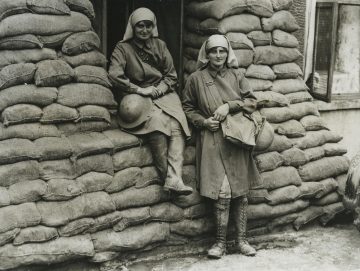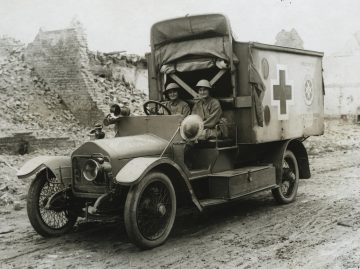Five favourite fairy tales, part XI
Posted on May 29, 2020 @5:17 pm by cshriver
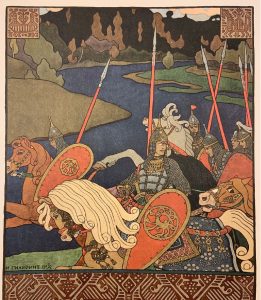
From “Volʹga” (PZ63.7 .V65 1904)
Happy Friday, and welcome back for this week’s Friday fairy tales blog post!
Even though the Rare Books and Special Collections reading room is currently closed, we’re excited to share the delightful results of a student assignment undertaken during the winter 2020 term for the English course “The Victorian Fairy Tale: Text and Image.”
For this assignment, Professor Pamela Dalziel asked her students to “choose five illustrated Victorian fairy tales available in Rare Books and Special Collections that you would like to have in your personal collection.” Some of Professor Dalziel’s students were kind enough to share their final selections with the public through the RBSC blog, some anonymously and some with author credit. Be sure to read all of the fairy tale assignments shared by Professor Dalziel’s students.
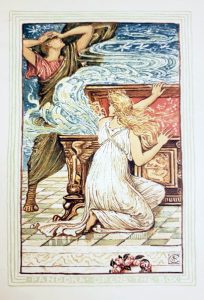
From “A Wonder Book for Girls and Boys” (PZ6 1892 .H3)
We hope you enjoy these charming fairy tale selections and will perhaps be inspired to stop by RBSC to see some of the books for yourself once the RBSC reading room has reopened.
Five fairy tale selections, part XI:
- Of “Monsters” and Men: King Frost, Volʹga, golden birds, green serpents, and cursed ladies
- Argonauts, were-wolves, kind ogres, Pandora, and the snark
Five favourite fairy tales, part X
Posted on May 22, 2020 @4:42 pm by cshriver
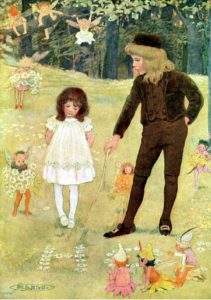
From “Mopsa, the Fairy” (PZ6 1910 I533)
We’re glad to have you back for our new tradition on the RBSC blog: Friday fairy tales!
Even though the Rare Books and Special Collections reading room is currently closed, we’re excited to share the delightful results of a student assignment undertaken during the winter 2020 term for the English course “The Victorian Fairy Tale: Text and Image.”
For this assignment, Professor Pamela Dalziel asked her students to “choose five illustrated Victorian fairy tales available in Rare Books and Special Collections that you would like to have in your personal collection.” Some of Professor Dalziel’s students were kind enough to share their final selections with the public through the RBSC blog, some anonymously and some with author credit. Be sure to read all of the fairy tale assignments shared by Professor Dalziel’s students.

From “The Three Little Kittens” (PZ4.9.B2247 Th 1862)
We hope you enjoy these charming fairy tale selections and will perhaps be inspired to stop by RBSC to see some of the books for yourself once the RBSC reading room has reopened.
Five fairy tale selections, part X:
- Magic fishbones, Prince Prigio, Mopsa the Fairy, the earthly paradise, and Sa’-Zada tales
- Wymps, riding hoods, Mother Goose, little kittens, and dancing princesses
No Comments
Celebrating Nurses and Health Care Professionals at RBSC
Posted on May 13, 2020 @12:32 pm by cshriver
By Krisztina Laszlo, Archivist, Rare Books and Special Collections
“To know even one life has breathed easier because you have lived; that is to have succeeded.” — Ralph Waldo Emerson
Every evening at 7:00 pm Vancouverites head to their windows and balconies to cheer, clap, ring bells, bang pot lids together, and make noise in appreciation for the work of our health care professionals and other essential workers. The effort in my neighbourhood (Mount Pleasant) might not equal the incredible volume from the West End, but we do well considering we do not have the same population density. There is someone on my block with a saxophone, who plays every night and I am certain there are also cowbells in the distance.
This outpouring of support and love for the brave women and men on the front lines of the COVID-19 response often brings tears to my eyes. It reminds me of the many nurses and care aids I have encountered through my life. The ones who looked after my mom with kindness and compassion through the last years of her life, of my mother who spent time as a nurse’s aid when she was a young refugee in Victoria, and the retired nurses I’ve worked with who keep up the British Columbia History of Nursing Archives. I am astounded and humbled by the work done by all of these incredible people past and present, and I am grateful beyond any way I can express with words for their continued and sustained efforts during the present crisis.
As an archivist, I wonder how I can positively contribute to the current situation. My role is to preserve evidence from the past, and to ensure it is accessible to future generations. Like most of my colleagues across Canada, I am working from home, social distancing, washing my hands, and engaging in all the other steps necessary to slow the spread of COVID-19 and protect the vulnerable around us. In light of current events and the focus on medical aid, I thought this would be an appropriate time to shine a spotlight on our historic documents relating to health care, and particularly on the nursing profession.
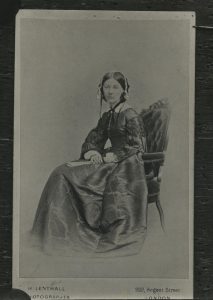
Photograph of Florence Nightingale Portrait. RBSC-ARC-1734-01-089-BC-2166-06.
Although the practice of nursing has been with us for centuries and remained predominantly female up to the current era, prior to this women were expected to tend only to members of their families. White upper middle class women did not care for the sick, dying or invalid strangers. It was in this context that Florence Nightingale, the most well known nurse of all, emerged. Nightingale defied her social standing as a wealthy daughter of a notable British family to advocate for, and create, Nursing as a profession for educated women based on the scientific principles of the day. At a time when women had few career options, this was a radical undertaking. Nightingale was able to put her theories into practice during the Crimean war (1853 – 1856), and with her success tending wounded soldiers the Nursing profession was firmly established.
For a detailed history of nursing see: https://www.britannica.com/science/nursing#ref36766
Rare Books and Special Collections is lucky to have a small cache of 88 letters written by Nightingale after her time tending the wounded of the Crimean War, and over a 100 received by her. The letters are digitized and available online for all to read and enjoy the words of this astounding woman. She made a commitment to help the wounded, and to training women to take up this work, a legacy we now celebrate daily.
https://open.library.ubc.ca/collections/florence
http://rbscarchives.library.ubc.ca/index.php/florence-nightingale-letters-collection
A compatriot, and close friend, of Nightingale is Sister Mary Gonzaga (Georgina Barrie), a Sister of Mercy from Bermondsey, England. She accompanied Nightingale to Crimea to nurse sick and wounded British soldiers as one of the Catholic nuns who volunteered for the mission and was unpaid for her work. Nightingale nicknamed her “Cardinal” in her letters, and Barrie’s nickname for Nightingale was “Pope.” Of her letters at UBC, 15 are written approximately a month apart during the war and discuss conditions in Crimea and request various supplies and items. After the Crimean War, Barrie founded the Hospital of Saint Elizabeth for Incurables in London in 1856.
http://rbscarchives.library.ubc.ca/index.php/sister-mary-gonzaga-georgiana-barrie-collection
- Sandbags instead of handbags – Lady ambulance drivers in France. RBSC-ARC-1636-BC-1763-0550.
- Lady ambulance drivers passing through a French village. RBSC-ARC-1636-BC-1763-0548.
Moving into the Twentieth Century, we house letters written by Martha May Beardmore (née Wilson), who was an English nurse who aided the British during World War I. In 1914, when Britain declared war on Germany. Beardmore settled her affairs in Regina and moved back to England to join the Queen Alexandra’s Imperial Military Nursing Service. As part of the Military Nursing Service, she aided efforts in France and the Balkan countries. Allegedly, she also ended up in the Palace of the Tsar of Russia and became a nurse to Grigori Rasputin. She ended up moving to France and then Belgium where she worked under noted nurse Edith Cavell. Our World War 1 British Press Photo collection contains images of nurses serving in France, which gives a sense of the conditions that Beardmore would have worked in.
http://rbscarchives.library.ubc.ca/index.php/martha-may-beardmore-collection

Saskatchewan million dollar campaign, June 17, 1922. SPAM461C.
Representing nursing during the Second World War is a photograph album compiled by Katherine Watson Emery, who was born in New Brunswick Canada in 1900. She moved to Vancouver, where she trained as a nurse. In 1944, she went into overseas service with the St. John Ambulance Brigade of Canada to tend to wounded during World War 2. She returned to Canada on September 25th 1945. The records document Emery’s service as a nurse during World-War 2, as well as her experiences of World-War 1, and her life and career as a nurse in Vancouver and New Brunswick.
http://rbscarchives.library.ubc.ca/index.php/katherine-emery-fonds
Not all of our nursing archives relate to wartime experiences, but also focus on practice in British Columbia. Mabel Clara Taylor was born in Eccleshall, England on the 1st of March 1891 to parents Joseph and Elizabeth Taylor. In her youth, she immigrated to Vancouver, British Columbia, where she studied nursing. In February of 1923, she graduated with a diploma in nursing from Vancouver General Hospital. Over the next three decades, she worked at various hospitals including the Prince Rupert General Hospital, the Essondale Mental Hospital, the Abbotsford General Hospital, the Mission Memorial Hospital, the Miller Bay Indian Hospital, the Royal Jubilee Hospital, the Oak Lodge Private Hospital, the Terrace Red Cross Outpost Hospital, the Children’s Hospital and the Nanaimo Indian Hospital.

[Chinese hospital clinic]. CC-PH-10640.
http://rbscarchives.library.ubc.ca/index.php/mabel-clara-taylor-fonds
Since 2019, Rare Books and Special Collections has been working with the British Columbia History of Nursing Society (BCHNS) on an exciting project to transfer their archival collections to the UBC Library. The BCHNS houses an extensive archive of nursing history in British Columbia, including records of individual nurses and nursing groups and associations. These materials cover the entire history of the profession in this province, including the development of nursing education and training. The archive is unparalleled in its coverage of this topic, and extensive in scope (it includes 22 meters of textual records, 270 audio recordings of oral histories, and more). We were weeks away from physically transferring the materials to RBSC when UBC switched to remote work due to COVID-19. When we return to campus, this acquisition will be a priority, especially considering the interest in this area engendered by the current focus on healthcare work.
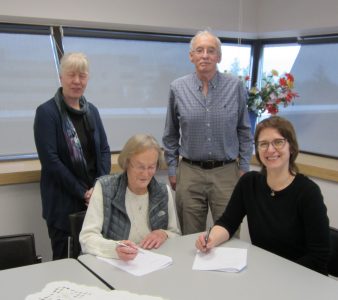
Nan Martin, BCHNS Chair of Succession Planning Task Group, and Krisztina Laszlo, Archivist, RBSC at official signing of agreement to transfer the BCHNS Archives to UBC Library on January 24, 2020. Francis Mansbridge, BCHNS Archivist, and Geertje Boschma of the UBC School of Nursing as witnesses.
“I attribute my success to this; I never gave nor took any excuse.” — Florence Nightingale
While the Rare Books and Special Collections reading room is currently closed, researchers interested in nursing history can access additional digitized content held by the UBC Library here: https://open.library.ubc.ca/collections/historyofnursinginpacificcanada
Please check the UBC Library homepage and the Rare Books and Special Collections homepage for future updates about reading room operations.
Five favourite fairy tales, part IX
Posted on May 8, 2020 @4:32 pm by cshriver
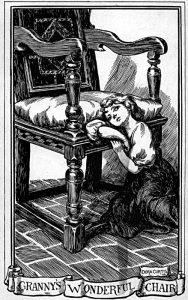
From “Granny’s Wonderful Chair and Its Tales of Fairy Times” (PR10.R9 R3 1906)
Just in time for a summer-like weekend in Vancouver, we welcome the return of our fantastic five favourite fairy tales feature!
Even though the Rare Books and Special Collections reading room is currently closed, we’re excited to share through our blog the delightful results of a student assignment undertaken during the winter 2020 term for the English course “The Victorian Fairy Tale: Text and Image.”
For this assignment, Professor Pamela Dalziel asked her students to “choose five illustrated Victorian fairy tales available in Rare Books and Special Collections that you would like to have in your personal collection.” Some of Professor Dalziel’s students were kind enough to share their final selections with the public through the RBSC blog.
We thought we had posted the last of these shared fairy tale picks some weeks ago, but then even more generous students stepped forward to share their selections, some anonymously and some with author credit. Be sure to read all of the fairy tale assignments shared by Professor Dalziel’s students.
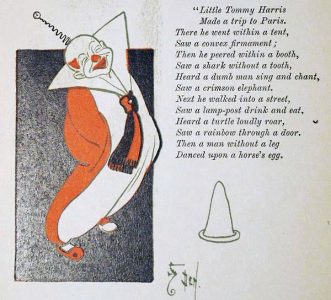
From “Dot and Tot of Merryland” (PZ6 1901 .B395)
We hope you enjoy these additional fairy tale selections and will perhaps be inspired to stop by RBSC to see some of the books for yourself once the RBSC reading room has reopened.
Five fairy tale selections, part IX:
- Strong female characters: Wounded lions, wonderful chairs, Gracieuse and Percine, six swans, and more riding hoods
- Doré gallery, were-wolfs, animal stories, the Faerie Queene, and Dot and Tot
Amazing Women: Hanne Wassermann
Posted on April 24, 2020 @3:44 pm by cshriver
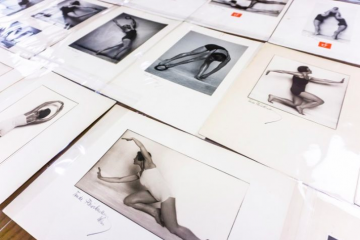
Images of Hanne taken by her good friend, the renowned portrait photographer Trude Fleischmann. Credit: UBC Library Communications
Many thanks to guest blogger James Goldie for contributing the below post! James has just completed his course work as a graduate student at UBC’s School of Information and has been working as a student archivist with Rare Books and Special Collections.
At the time of her death, Hanne Wassermann Walker (1893-1986) was known by just a handful of people in Vancouver, most of whom were women who either took her private exercise classes or whose mothers did. She had no local heirs, requested no funeral service, and had it not been for a quick-thinking individual hired to dispose of her belongings, one of RBSC’s most interesting and powerful acquisitions might have been lost to history.
Found in Hanne’s personal archives is more than the life of one amazing woman — it reveals her connections to several.
Daughter of a Jewish city planner in Vienna, Hanne had an average upper-middle class childhood in Austria at the turn of the century. After high school, she studied at the Graphic Teaching and Research Institute’s School of Photography and Reproduction. Although Hanne would remain an avid amateur photographer her entire life, she discovered her real passion was health and fitness.
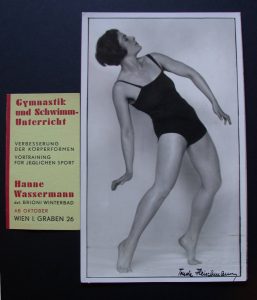
A card advertising gymnastic and swimming lessons, accompanied by a photo of Hanne signed by Trude Fleischmann. Credit: Bjarne Tokerud
Hanne became a pioneer in the field of women’s physical fitness, developing a range of workouts, stretches, and exercise methods, many of which she chronicled in magazine articles published across Europe. Her fonds contains hundreds of photographs depicting “The Hanne Wassermann Method” — a kind of free movement form of exercise — including more than 200 originals taken by her good friend Trude Fleischmann.
“Photographer of the Famous”
It is likely Hanne met Trude while studying photography (both women graduated from the same institute around the same time). In 1920, at just 25 years old, Trude founded her own studio and quickly became renowned for her portraits of Austria’s artistic and cultural elites.
Trude was as fiercely independent as she was talented. She never married, instead having relationships with women, one of whom helped her to emigrate to the United States after the Auschluss in 1938. In New York, she continued her career as a portrait photographer, although with considerably less fanfare. Her New York Times obituary in 1990 referred to her as the “Photographer of the Famous,” noting that some of her subjects included Eleanor Roosevelt, Albert Einstein, and Sinclair Lewis.
However, long before taking any of those pictures, Trude was photographing Hanne. Many of the photos in RBSC’s collection feature Hanne modelling her own system of stretches and athletic poses.
Summers in Brioni
These photos were among those that circulated with Hanne’s published writing, and may have played a role in her own fame as one of Austria’s leading experts in women’s health and wellness. Just as Trude opened a photography studio, Hanne opened her own gymnasium and school in Vienna where she taught her Method. She also spent summers in the Brijuni Islands, which is where she met many of her most famous students.
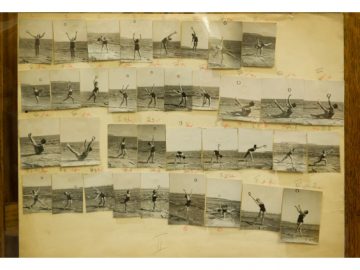
Hanne demonstrates a series of exercises uses a small rubber ring. These photos may have been taken in Brioni, Italy, where Hanne spent several summers teaching fitness classes. Credit: Vancouver Sun
Located in the northern Adriatic Sea, the Brijuni Islands were purchased by a Viennese industrialist in the late 19th century and transformed into the Austrian Riviera’s premier vacation spot. Brioni (as it was known after becoming part of Italy in 1918) was “an elegant health resort, a world-renowned elite seaside destination for the rich and famous of the Empire, an exclusive meeting place for the European aristocracy, artists and financial magnates.”
In Brioni, Hanne taught fitness classes, swimming lessons, and also gave lectures. Her collection includes many photos she took, capturing life in this sunny paradise. Here she developed a roster of highly influential clients including Hedy Lamarr, Princess Helen of Greece and Denmark, members of the Rothschild family, and more. Hanne’s appointment book provides a window into the many people who availed themselves of her services during this period.
Among them was Marie Louise Wanamaker Munn.
Escape to America
Marie Louise was the granddaughter of John Wanamaker, a Philadelphia businessman whose chain of department stores made the family exceedingly wealthy. A staple subject of the New York society pages, Marie Louise’s lavish 1915 wedding made headlines — as did her 1933 divorce, citing cruelty on the part of her husband. Marie Louise was anything but cruel, as evidenced by her friendship with Hanne.
It seems likely, based on records in Hanne’s fonds, that the two met in Brioni and there developed a connection. Following Nazi Germany’s annexation of Austria, Hanne, like so many others of Jewish ancestry, needed to escape continental Europe. It was Marie Louise who helped her come to the United States as a refugee. Hanne was joined shortly thereafter by her mother and her partner, George Dickson Walker.
Her aid did not stop there. Upon their arrival in the U.S., Hanne and George travelled westward by car, stopping at hotels and resorts along the way where Hanne held lectures and classes. She even developed a method to more safely carry injured bodies in the event that World War II bombings reached North American soil. However, while they were in Nevada, George was arrested in a case of mistaken identity. Hanne, in a foreign land with few social ties, immediately telegraphed Marie Louise for help. (George was released shortly thereafter.)
A new life in British Columbia
They were not long in the U.S. before George accepted a job as a pastor in B.C. The pair married, and soon he and Hanne had settled in West Vancouver, where they would live for the rest of their lives. Hanne continued to teach fitness classes and also worked as an unlicensed physiotherapist. The couple had no children together, although they did own several dogs over the years — affectionately documented in the many photos taken by Hanne.
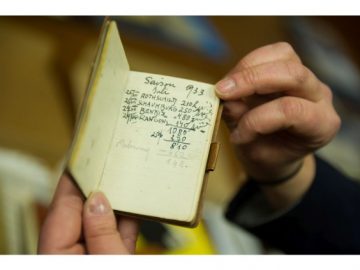
A peek inside Hanne’s appointment book reveals some of her many high-profile clients. Credit: Vancouver Sun
Just as she had in Europe, Hanne developed connections with a number of the city’s social and cultural heavyweights, including philanthropist and Order of Canada recipient Iby Koerner (of whom there are several portraits taken by Hanne in this collection). It’s not clear whether the Koerners or her other friends and clients in Vancouver knew about her past life as a trailblazer of women’s fitness.
“I only knew her as a physiotherapist,” said Dr. Nelly Auersperg, who knew Hanne during her life. “Why she didn’t say anything, I have no idea. She didn’t talk much about her past. Maybe it hurt.”
While the Rare Books and Special Collections reading room is currently closed, we hope you’ll come and explore the Hanne Wassermann Walker fonds when we have re-opened. Please check the UBC Library homepage and the Rare Books and Special Collections homepage for future updates about reading room operations. In the meantime, you can explore the finding aid for a complete description of materials in the Hanne Wassermann Walker fonds.
No Comments
Join RBSC for a “Wild Ride”!
Posted on April 22, 2020 @3:24 pm by cshriver
With the closure of UBC Library due to the quickly evolving situation with COVID-19, we apologize that this wonderful exhibition will not be open to the public in the coming weeks. Please enjoy these photos of the exhibition, which were taken by the talented student curators. A complete catalogue of the exhibition can be downloaded here.
Rare Books and Special Collections at UBC Library is delighted to announce a new exhibition: The Wild Ride: In and Out of Years and Over a Century of Picturebooks.
Many thanks to guest bloggers Logaine Navasques, Maureen Duteau, Jacqueline Noel, and Jordyn Zirk for contributing the below post! Logaine and Maureen, graduate students in the Master of Arts in Children’s Literature Program, and Jacqueline and Jordyn, graduate students at the UBC School of Information, curated this magical new exhibition under the supervision of Dr. Kathryn Shoemaker, Adjunct Professor with the UBC School of Information.
 The Wild Ride: In and Out of Years and Over a Century of Picturebooks is a chronological look at the evolution of the picturebook, one of the important literary art forms to emerge from the 20th Century. The exhibit features ground breaking, innovative books such as Millions of Cats, Madeline, Where the Wild Things Are, The Very Hungry Caterpillar, I Want My Hat Back and other brilliant picturebooks responsible for forging a literary art form that reflects the culture of its time and is becoming a vital form in promoting visual and print literacy for all ages.
The Wild Ride: In and Out of Years and Over a Century of Picturebooks is a chronological look at the evolution of the picturebook, one of the important literary art forms to emerge from the 20th Century. The exhibit features ground breaking, innovative books such as Millions of Cats, Madeline, Where the Wild Things Are, The Very Hungry Caterpillar, I Want My Hat Back and other brilliant picturebooks responsible for forging a literary art form that reflects the culture of its time and is becoming a vital form in promoting visual and print literacy for all ages.
The literary picturebook is a new literary art form that emerges in the 20th century, evolving from the illustrated children’s book. It evolves concurrently with two other relatively new visual sequential narrative forms, comic/graphic novels and animated films. The three forms influence each other as they develop principally because so many of the creators worked in all three forms. This exhibit highlights key books in this evolution revealing how each changed the nature and content of the picturebook form.
The Wild Ride: In and Out of Years and Over a Century of Picturebooks is on display from March 4 through May 30, 2020. The exhibition is free and open to the public, and people of all ages are encouraged to attend. A complete catalogue of the exhibition can be downloaded here. For more information, please contact Rare Books and Special Collections at (604) 822-2521 or rare.books@ubc.ca.
No Comments
Five favourite fairy tales, part VIII
Posted on April 17, 2020 @5:01 pm by cshriver
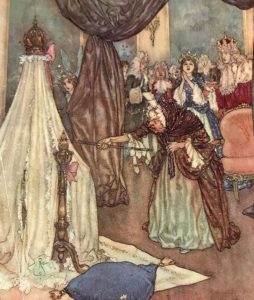
From “The Sleeping Beauty and Other Fairy Tales from the Old French” (PZ6 1910 Q954)
We’ve made it to Friday, and have also arrived at our final “five favourite fairy tales” assignment post. Thank you so much to Professor Pamela Dalziel and her students in the English course “The Victorian Fairy Tale: Text and Image” for sharing these with us! Be sure to read all of the fairy tale assignments kindly shared by Professor Dalziel’s students.
For this assignment, Professor Dalziel asked her students to “choose five illustrated Victorian fairy tales available in Rare Books and Special Collections that you would like to have in your personal collection.”
We hope you enjoy these final fairy tale selections and will perhaps be inspired to stop by RBSC to see some of the books for yourself once the RBSC reading room has reopened.

From “The Emperor’s New Clothes” (PZ8 .A542 St 1911)
Five fairy tale selections, part VIII:
- “There was an old lady…”: Representations of Old Women in Five Victorian Fairy Tales
- New clothes, sailing voyages, Prince Perrypets, Robinson Crusoe, and seven wonderful cats
No Comments
Five favourite fairy tales, part VII
Posted on April 15, 2020 @9:43 am by cshriver
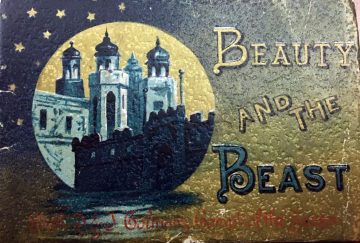
“Beauty and the Beast” (SPAM23774)
I hope everyone enjoyed a lovely weekend!
Even though the Rare Books and Special Collections reading room is currently closed, we’re excited to share through our blog the delightful results of a student assignment undertaken during the winter 2020 term for the English course “The Victorian Fairy Tale: Text and Image.”
For this assignment, Professor Pamela Dalziel asked her students to “choose five illustrated Victorian fairy tales available in Rare Books and Special Collections that you would like to have in your personal collection.” Some of Professor Dalziel’s students were kind enough to share their final selections with not only the team at RBSC, but also with the public through our blog.
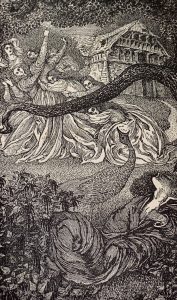
From “The House of Joy” (PR10.S5 H6 1895)
So far we have sixteen assignments that students have been willing to share, some anonymously and some with author credit. Be sure to read all of the fairy tale assignments kindly shared by Professor Dalziel’s students.
We hope you enjoy these fairy tale selections and will perhaps be inspired to stop by RBSC to see some of the books for yourself once the RBSC reading room has reopened.
Five fairy tale selections, part VII:
- Japanese fairy tales, beauty and beasts, ginger and pickles, four chirps, and water babies
- Houses of joy, red riding hoods, Brothers Grimm, sleeping beauties, and pied pipers
Five favourite fairy tales, part VI
Posted on April 8, 2020 @10:57 am by cshriver
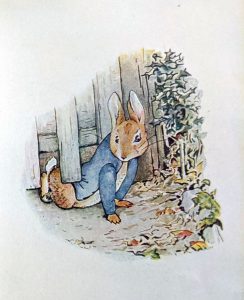
From “The Tale of Peter Rabbit” (PZ6 1902 P687)
Since we’ll be away on Friday and Monday for the Easter long-weekend, this will be the last new fairy tale post until next week. Happily, today’s fairy tale picks feature one of literature’s favourite rabbits!
Even though the Rare Books and Special Collections reading room is currently closed, we’re excited to share through our blog the delightful results of a student assignment undertaken during the winter 2020 term for the English course “The Victorian Fairy Tale: Text and Image.”
For this assignment, Professor Pamela Dalziel asked her students to “choose five illustrated Victorian fairy tales available in Rare Books and Special Collections that you would like to have in your personal collection.” Some of Professor Dalziel’s students were kind enough to share their final selections with not only the team at RBSC, but also with the public through our blog.
So far we have sixteen assignments that students have been willing to share, some anonymously and some with author credit. I’ll post links to the final assignments a few at a time over the coming weeks. Be sure to read all of the fairy tale assignments kindly shared by Professor Dalziel’s students.
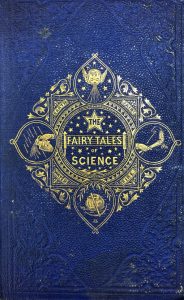
“The Fairy Tales of Science” (PZ6 1866 .B76)
We hope you enjoy these fairy tale selections and will perhaps be inspired to stop by RBSC to see some of the books for yourself once the RBSC reading room has reopened.
Five fairy tale selections, part VI:
- Brownies, soldier’s children, grandmother’s shoes, wet magic, and rabbits!
- Monsters, cats, dogs, snap-dragons, and brown owls
No Comments
Five favourite fairy tales, part V
Posted on April 6, 2020 @5:00 pm by cshriver
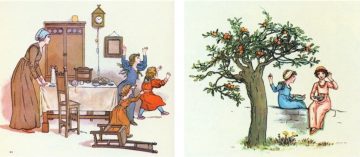
From “The Pied Piper of Hamelin” (PR10.M2 B7 1889 P5)
Even though the Rare Books and Special Collections reading room is currently closed, we’re excited to share through our blog the delightful results of a student assignment undertaken during the winter 2020 term for the English course “The Victorian Fairy Tale: Text and Image.”
For this assignment, Professor Pamela Dalziel asked her students to “choose five illustrated Victorian fairy tales available in Rare Books and Special Collections that you would like to have in your personal collection.” Some of Professor Dalziel’s students were kind enough to share their final selections with not only the team at RBSC, but also with the public through our blog.
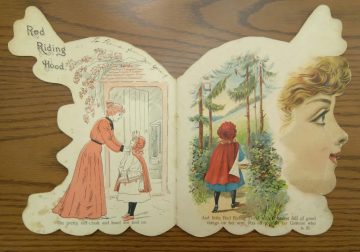
From “Red Riding Hood” (PZ6 1895 .R427)
So far we have sixteen assignments that students have been willing to share, some anonymously and some with author credit. I’ll post links to the final assignments a few at a time over the coming weeks. Be sure to read all of the fairy tale assignments kindly shared by Professor Dalziel’s students.
We hope you enjoy these fairy tale selections and will perhaps be inspired to stop by RBSC to see some of the books for yourself once the RBSC reading room has reopened.
Five fairy tale selections, part V:
- Riding hoods, Queen of Hearts, fairy lands, revolving pictures, and a book full of holes
- More ice maidens, French tales, pied pipers, Cinderella in songs, and wymps
No Comments
